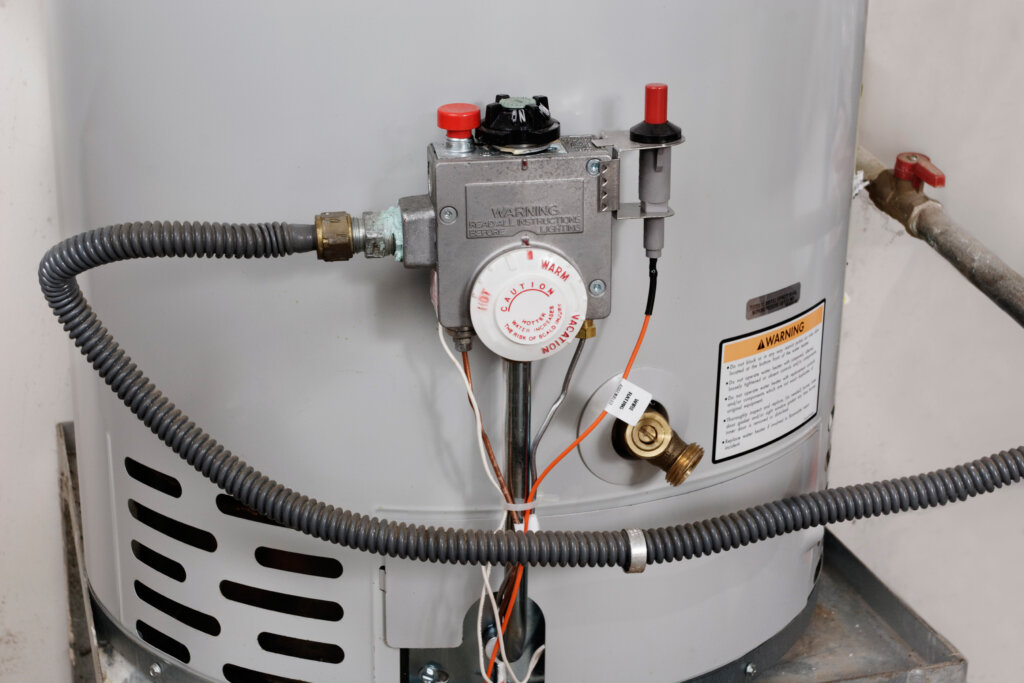Replacing the water heater is an advanced DIY project that some homeowners can handle themselves. The project requires making plumbing connections, wiring or gas hookups, and a vent connection for gas heaters. If you’re up for the challenge, here’s what you need to do.
The Equipment, Tools, And Materials You’ll Need
To replace the water heater, you should have the following on hand:
- Adjustable wrench
- Garden hose
- Channel-lock pliers
- Tubing cutter
- Screwdrivers
- Propane torch and sweat-soldering supplies
- Appliance dolly and straps
- New water heater
- Shims
- Plumbing fittings
- Plumber’s pipe-seal tape
- Temperature- and pressure-relief valve
- Water heater draft hood
- Flexible gas tube
- Water heater drain valve
- Vent pipe fittings
- Water heater flex tubes
- Galvanized plastic-lined water heater nipples (2)
Water Heater Installation Process
Begin by shutting off water at the main shutoff valve or at a branch shutoff valve controlling supply to the water heater. Then, shut off the gas or electricity, depending on the type of water heater you have.
Attach a garden hose to the drain valve of the water heater and open the nearest hot water faucet to prevent suction in the line. Place the other end of the hose outdoors or over a floor drain. Slowly open the drain valve and drain the tank completely. Once the tank has been drained, turn off the valve and remove the hose.
Use a pipe wrench or channel-lock pliers to disconnect the hot and cold water lines from the water heater. Then, disconnect the power source for the water heater and the water heater vent.
Use an appliance dolly to remove the old water heater and bring in a new one. Clean the floor before moving the new water heater into place. Line up the existing plumbing with the water heater’s plumbing connections and level the new water heater.
Next, install the relief valve and various fittings, such as the temperature and pressure relief valve (TPR valve) and discharge drainpipe.
Attach galvanized plastic-lined nipples to the cold water inlet and hot water outlet openings. Connect the water lines and the gas or electrical lines. Reconnect the vent (for gas heaters), turn on hot water at a faucet in the home and then turn on the cold water supply valve to the water heater. Once the tank is full, hot water will begin to flow from the faucet.
The advanced installation process isn’t for every homeowner to handle. If you’re having second thoughts about handling the project yourself, call Tucker Hill for professional water heater installation.

